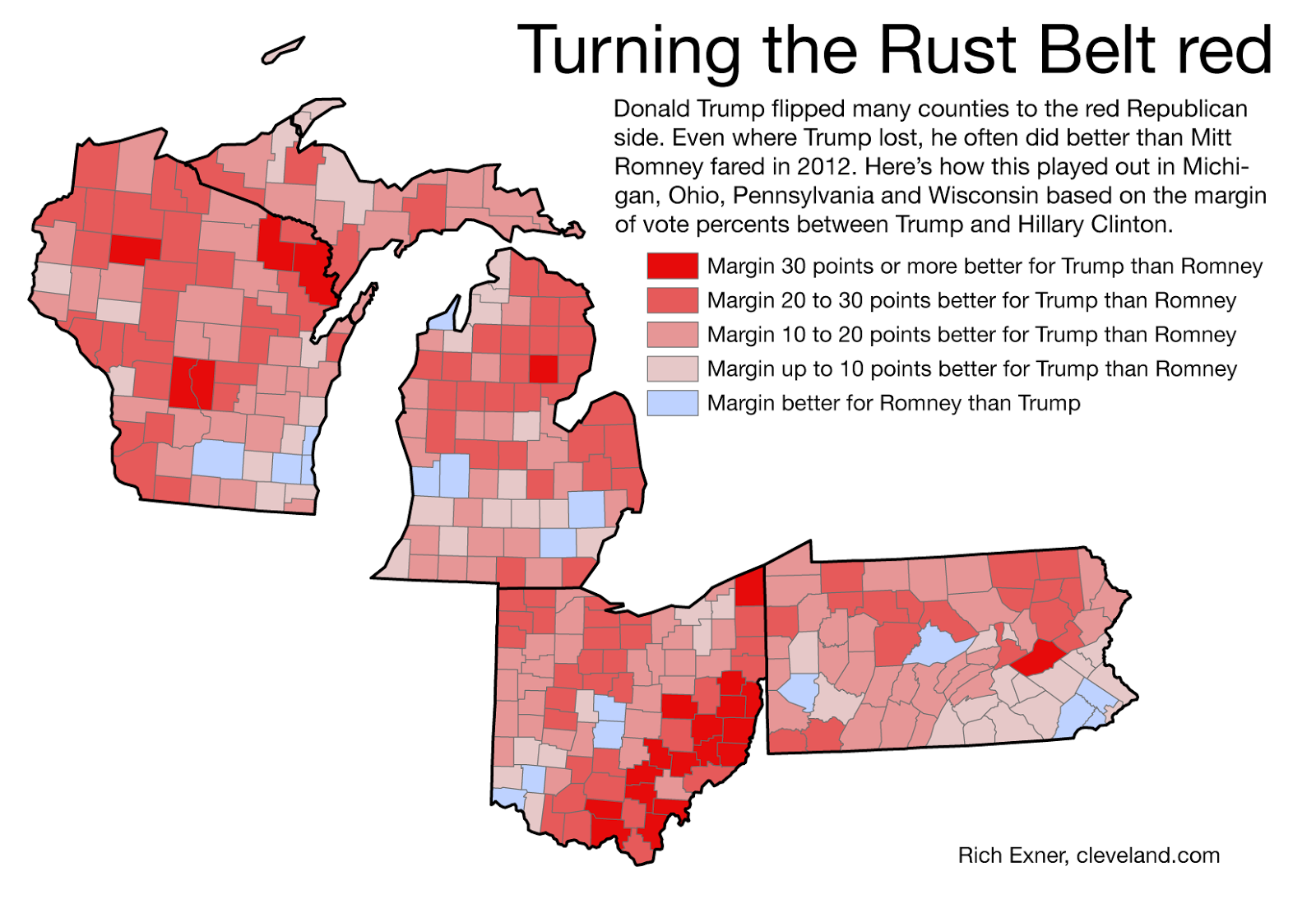
This is partly due to greater trade union presence, and greater availability of migrant labour in the south. In the north-west, wages tended to be higher. One reason for this shift within the US was comparative labour costs. Whilst the rust-belt lost jobs, some US manufacturing jobs shifted to the south. The US economy saw a decline in manufacturing as a share of GDP, but rise in services.


The decline in manufacturing is mirrored in other western nations, such as the UK. Textile industries were in difficulty well before the 1970s. With rising real wages in the post-war period, labour intensive manufacturing industries became less competitive compared to new industrial nations in Asia. It was one of the highest populated areas in the US with large-scale manufacturing – in particular, steel, coal and manufacturing What caused the area to become a rust belt? In the Twentieth Century, this region used to be known as the manufacturing belt of the US. Pennsylvania, West Virginia, Ohio, Indiana, and the Lower Peninsula of Michigan, ending in northern Illinois, eastern Iowa, and southeastern Wisconsin.The Rust belt stretches from west New York to the mid-west around the Great Lakes It includes: For example, in the UK, the 1980s also saw a declining manufacturing sector in north-east England, south Wales and parts of Scotland. Social problems associated with structural unemployment.Īlthough the rust belt refers mostly to the mid-west of the US, it can refer to any area which experienced a decline in heavy manufacturing industry around the 1980s.Cities and regions affected tend to have: The rust belt is an area of mid-west US dominated by declining manufacturing industry.


 0 kommentar(er)
0 kommentar(er)
